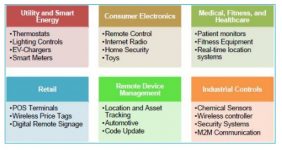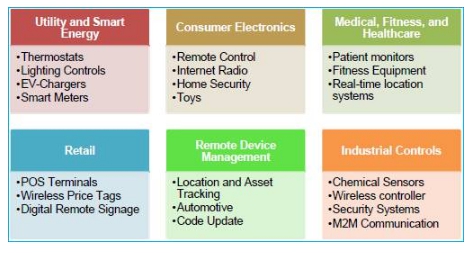
Choose Wi-Fi Modules for Embedded Designs or IoT Designs
“Wi-Fi technology is extending beyond traditional boundaries to every aspect of people’s daily lives, from consumer electronics to medical devices and industrial controls, and is evolving towards the Internet of Things (IoT). This means that engineers developing embedded electronics are increasingly required to design in interoperability with other products that use Wi-Fi. These designs must meet at least one of the IEEE 802.11 standards, requiring a manual test scheme. There are also many factors to consider, especially for engineers new to RF product integration, it can be difficult to know where to start.
“
Wi-Fi technology is extending beyond traditional boundaries to every aspect of people’s daily lives, from consumer electronics to medical devices and industrial controls, and is evolving towards the Internet of Things (IoT). This means that engineers developing embedded electronics are increasingly required to design in interoperability with other products that use Wi-Fi. These designs must meet at least one of the IEEE 802.11 standards, requiring a manual test scheme. There are also many factors to consider, especially for engineers new to RF product integration, it can be difficult to know where to start.
In this article, it first introduces some basics of WLAN integration and 802.11, discusses typical applications, and then examines certain parameter filtering criteria (i.e., key considerations) when searching for modules, module tradeoffs, and the need for an RF engineer. Wi-Fi module selection is one of eight major parts of the larger discussion of adding Wi-Fi to designs. Choosing the appropriate module is a very good starting point as this is critical to the design.
Typical applications using Wi-Fi modules
In this regard, Wi-Fi can be seen as a way to interoperate with other WLAN devices. WLAN refers to devices that meet one or more IEEE 802.11 standards and can be used in a variety of scientific, industrial, commercial, and consumer applications, as shown in the figure below. Wi-Fi is available for many devices, all of which can connect to network resources through a wireless network access point.

Devices using Wi-Fi modules are everywhere
Filter criteria when searching for modules
Module manufacturers typically categorize modules by parameters. Use the parameters below to refine search results based on application metrics. This is a long list, you’d better download the “Select Wi-Fi Module” application guide to get specific information on each parameter:
・ Supported protocols/standards
· Working frequency
・ Delivery range
・ Transmit power output, operating supply current or voltage
・ Data rate (maximum throughput)
・ Microcontroller/Microprocessor
・ Operating system (driver support)
・ Antennas and Connectors
・ Secure Wi-Fi authentication method
・ Shape and size
· range of working temperature
・ Package type
・ PCB wiring
・ Hardware interface
・ Other features (real time clock, auto sleep/wake, etc.)
・ Certification/Conformance testing
Remember, you need to consider both hardware and software, as the Wi-Fi module is a functional unit that only operates when embedded inside the system. It should also be noted that the Wi-Fi software should include device drivers, integrated IEEE 802.11 security requests, and full-featured management and monitoring tools. The Wi-Fi module hardware consists of two parts: the Wi-Fi chip and the application host processor.
compromise factor
As with anything, there are tradeoffs when choosing a Wi-Fi module. The three main factors in the evaluation are data rate, range and power requirements. When comparing different Wi-Fi protocols, IEEE 802.11n and IEEE 802.11ac have the advantage of higher data throughput, while IEEE 802.11b/g has the advantage of compatibility and power requirements.
IEEE 802.11n provides operational advantages such as higher data throughput, greater range, and robust link quality, resulting in higher network utilization. 802.11ac is based on high bandwidth over extended range, providing twice the bandwidth of 600 Mbps over 802.11n. It implements a Wi-Fi solution that meets the current demand for high-capacity, high-quality mobile real-time applications such as video and voice. The use of multiple antennas (MIMO technology) further increases data rates and range. These extended capabilities increase the complexity of the BOM design at the expense of using multiple antenna structures, while using more power.

Typical tradeoffs when choosing a Wi-Fi module
RF engineer and Wi-Fi module
Earlier I discussed buying a pre-built Wi-Fi module, which means no RF engineer is required. Most manufacturers do not have the RF expertise required to build network equipment. However, there are many tasks, such as debugging and building custom embedded modules for manufacturing, that require some RF expertise. In these cases, you may want to hire an RF consultant, or rely on the expertise of WLAN and RF test equipment manufacturers.
Choosing the best Wi-Fi module for your design application starts with careful consideration of which Wi-Fi module parameters will meet your needs, what trade-offs there are, and what WLAN and RF device test equipment you will use. Download the “How to Wi-Fi Modules” application note for a more detailed look at this technology and how to make it better for your needs.
The Links: P760A06 SX14Q004-ZZA IGBT-SOURCE



